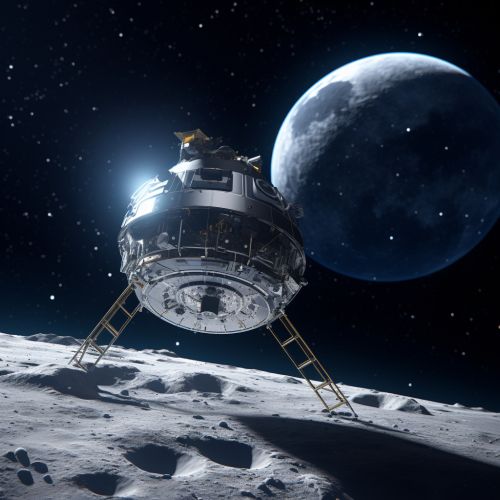Lunar Crater Observation and Sensing Satellite
Introduction
The Lunar Crater Observation and Sensing Satellite (LCROSS) was a robotic spacecraft operated by NASA. The mission was conceived as a low-cost means of determining the nature of hydrogen detected in the polar regions of the moon. The main scientific objectives of the LCROSS mission were to confirm the presence or absence of water ice in a permanently shadowed crater at the Moon's South Pole. The mission was launched together with the Lunar Reconnaissance Orbiter (LRO) on June 18, 2009, as part of the shared Atlas V rocket launch vehicle.


Mission Overview
The LCROSS mission was a fast-track, low-cost companion mission to the LRO. The LCROSS mission's primary goal was to confirm the presence or absence of water ice in a permanently shadowed crater at the Moon's South Pole. The mission was designed to use the spent Centaur upper stage of the Atlas V rocket as a 2,200 kg kinetic impactor, with LCROSS flying in its wake. After separation, LCROSS would observe the impact and the ejecta plume of the Centaur.
Mission Design
The LCROSS mission had two main parts: the Shepherding Spacecraft (S-S/C) and the Centaur upper stage rocket. The S-S/C was equipped with a suite of science instruments to observe the impact, the ejecta plume, and the resulting crater. The Centaur was the payload of the LCROSS mission, intended to be crashed into the lunar surface to create an ejecta plume.
Science Payload
The LCROSS carried a suite of nine science instruments to achieve its scientific goals. The payload was divided into two categories: those for direct viewing (Visible Camera, Near Infrared Cameras, and Mid Infrared Cameras), and those for indirect viewing (Spectrometers, Radiometer, and Photometer). The LCROSS science payload was selected to provide a broad range of data about the lunar regolith.
Mission Timeline
The LCROSS mission timeline was divided into several phases: Launch, Lunar Swingby, Lunar Transit, Lunar Impact, and Data Analysis. The Launch phase began with the launch of the LCROSS and LRO on the same Atlas V rocket. The Lunar Swingby phase involved a gravity assist maneuver around the Moon to put the LCROSS on a trajectory towards its target crater. The Lunar Transit phase was the period when the LCROSS was en route to the Moon. The Lunar Impact phase was when the Centaur impacted the Moon, followed by the Shepherding Spacecraft. The Data Analysis phase was when the data from the LCROSS was analyzed by the science team.
Mission Results
The LCROSS mission was a success, achieving its primary objective of confirming the presence of water ice on the Moon. The impact created by the Centaur upper stage revealed a plume rich in water vapor and ice, along with a range of other compounds. The discovery of water on the Moon has significant implications for future lunar exploration.
Legacy
The LCROSS mission left a lasting legacy in lunar exploration. The confirmation of water ice on the Moon has changed the way scientists think about the lunar environment and has potential implications for future human exploration of the Moon. The mission also demonstrated a cost-effective method for performing lunar impacts and collecting high-quality data about the lunar surface.
